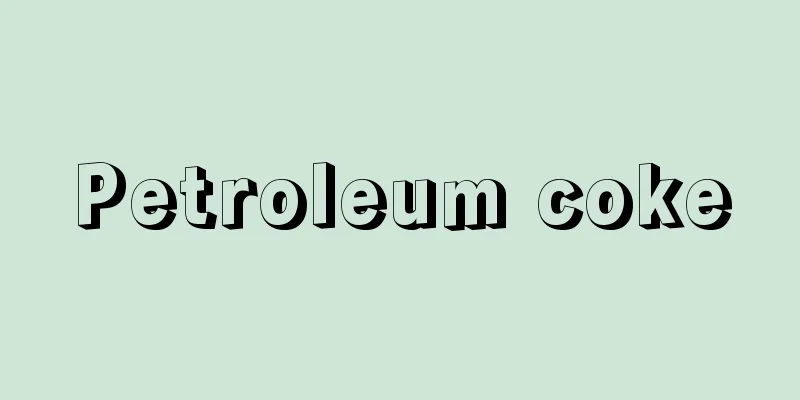Sales tax - Uriagezei (English spelling) sales tax

|
This is a tax levied based on the transaction volume, i.e., the amount of sales. It is broadly divided into multi-stage sales taxes, which are levied at all stages of transactions, including manufacturing, wholesale, and retail, and single-stage sales taxes, which are levied at only one of these stages. Sales taxes levied at all stages are also called turnover taxes, and their characteristic is that the transaction volume, which is the tax base, is not the added value minus the value of raw materials and intermediate goods purchased at the previous stage, so double counting occurs and the tax revenue is several times larger than the GNP (gross national product), and therefore even a very low tax rate can generate the same amount of tax revenue. On the other hand, it has the disadvantage that the tax levied at the previous stage of transactions constitutes part of the transaction price, resulting in double and triple tax accumulation. In addition, the tax burden as a percentage of the product price differs depending on the number of transactions, making it difficult to make appropriate border tax adjustments (taxation measures that exempt exports and tax imports). Single-stage sales taxes are called producer sales taxes, wholesale sales taxes, or retail sales taxes depending on the stage at which they are taxed, and are easier to administer than multi-stage sales taxes because they subject fewer businesses to them, but the drawback is that, because they are single-stage taxes, the tax rate must be relatively high to collect the same amount of tax revenue. They are also classified according to whether the scope of sales is limited to consumer goods or not, and if it is limited to consumer goods, whether it is general consumption or selective consumption. For example, a single-stage sales tax at the retail stage is a retail tax, but it can be classified into retail taxes on general consumption, retail taxes on partial consumption, and retail taxes on both consumer goods and capital goods. Turnover taxes, which are levied on all transactions such as retail, wholesale, and manufacturing, have long been adopted in continental European countries, which have tax systems centered on indirect taxes, and constituted an important tax item, but in 1957 the EC (European Community) decided to streamline the sales taxes of member countries in order to expand intra-regional trade, and in 1967 decided to replace them with value-added taxes, and so they gradually shifted to value-added taxes. In Japan, too, a turnover tax was implemented in September 1948 (Showa 23) after the Second World War, but it was pointed out as an unfair tax in the Shoup recommendations, and was abolished in December 1949. In the case of a turnover tax, there is an incentive for companies to promote vertical integration in order to avoid tax accumulation. A completely vertically integrated bread manufacturer only pays a single tax amount equal to the amount of sales of the final product (retailed bread) multiplied by the turnover tax. However, if the production stages are different, the tax amount paid by multiplying the tax rate by each sales amount is included in the purchase amount of the next production stage, and tax is levied on that tax, resulting in a cumulative effect. Therefore, even if the turnover tax rate is the same, a vertically integrated company will pay less tax. In addition, the tax burden as a percentage of the product price varies depending on the number of transactions, and the amount of the turnover tax is unclear, making it difficult to implement appropriate border tax adjustments (taxation measures that exempt exports and tax imports). When the tax base is based on value added rather than transaction volume, it can also be classified into GNP (gross national product) type, NNP (net national product) type, and consumption type. The GNP type is not chosen because depreciation, which is part of production costs, is included in the tax base of VAT, which goes against the tax principle that production costs should not be taxed in order to avoid damaging the production base. The NNP type VAT is levied on capital goods (net investment minus depreciation) as well as consumption goods. However, even if it is net investment, investment is excluded from the tax base because it is not the ultimate goal of the economy but merely a roundabout production to produce consumer goods more efficiently. In other words, consumption type VAT is the norm, and both the EU VAT and Japan's consumption tax are consumption type VAT. [Masatoshi Hayashi] "Masatoshi Hayashi, Fiscal Theory: Perspectives on Tax System Construction and Reform" (Yuhikaku, 2008) [References] | | |Source: Shogakukan Encyclopedia Nipponica About Encyclopedia Nipponica Information | Legend |
|
取引高すなわち売上額を課税標準として課税される税をいう。製造、卸売、小売のすべての取引段階に課される多段階売上税と、いずれか一段階のみに課される単段階売上税とに大別される。多段階で全取引に対して課税される売上税は取引高税ともよばれ、その特徴は、課税標準の取引高が前段階から仕入れた原料や中間財の価値を差し引いた付加価値ではないので、二重計算となるからGNP(国民総生産)の数倍にもあたるくらい大きく、したがってきわめて低い税率でも同額の税収をあげることができる点にある。他方、前段階までの取引において課された税が取引価格の一部を構成し、二重、三重に税が累積していくという欠点がある。また、製品価格に占める税負担は、取引の回数により異なるので、適正な国境税調整(輸出品に対して免税し、輸入品に対して課税する税制措置)が困難である。単段階売上税は、課税される段階によって製造者売上税、卸売売上税、小売売上税とよばれ、多段階売上税に比べると対象企業数が少なくなるので行政的には容易であるが、単段階課税のため、同額の税収を徴収するためには税率を比較的高くしなければならないのが欠点である。また、売上高の範囲が消費財のみか否か、また消費財のみでも一般消費か選択的消費かによっても分類される。たとえば小売段階での単段階売上税は小売税であるが、一般消費に対する小売税、一部消費に対する小売税、消費財と資本財両財に対する小売税に分類される。 小売、卸売、製造といった全取引に課税される取引高税は、間接税中心の税体系をもつヨーロッパ大陸の諸国においては古くから採用され、重要な税目を構成していたが、EC(ヨーロッパ共同体)が域内貿易を拡大するために1957年に加盟各国の売上税の整理を決め、1967年にはこれにかわって付加価値税の採用を決定したので、しだいに付加価値税へと移行した。日本でも第二次世界大戦後の1948年(昭和23)9月から取引高税という名称で実施されたが、シャウプ勧告で不公平税として指摘され、1949年12月には廃止された。 取引高税の場合には、税の累積を回避するために、企業に垂直的統合を促進する誘因が生ずる。完全に垂直統合されたパン製造会社においては、最終製品である小売されるパンの売上高に取引高税を掛け合わせた額の税額を一度払うだけだが、各生産段階が異なる企業である場合には、それぞれの売上高に税率を掛け合わせて支払った税額が、次の生産段階の仕入れ額に含まれ、その税に対して税がかかるという累積効果が生ずるから、同じ率の取引高税でも税額は垂直統合された企業のほうが少なくてすむ。また、製品価格に占める税負担は、取引の回数により異なり、取引高税の金額が不明確なので、適正な国境税調整(輸出品に対して免税し、輸入品に対して課税する税制措置)が困難である。 取引高ではなく付加価値を課税標準とする場合にもGNP(国民総生産)型、NNP(国民純生産)型、消費型とに分類できる。GNP型は生産費の一部である減価償却費も、付加価値税の課税標準に含まれ、生産基盤を損なわないために生産費用に課税してはならないという租税の原則に反するので選択されない。NNP型の付加価値税は、消費財とともに資本財(減価償却を差し引いた純投資)にも課税される。しかし、純投資であっても、投資は経済の最終目的ではなく、消費財をより効率的に生産するための迂回(うかい)生産にすぎないから、課税標準からは除かれる。すなわち、消費型の付加価値税が一般的であり、EUの付加価値税も日本の消費税もこの消費型の付加価値税である。 [林 正寿] 『林正寿著『財政論――税制構築と改革の視点』(2008・有斐閣)』 [参照項目] | | |出典 小学館 日本大百科全書(ニッポニカ)日本大百科全書(ニッポニカ)について 情報 | 凡例 |
>>: Woolley, Sir Charles Leonard
Recommend
Onden peasant village - Onden peasant village
...It can also refer to settlements that farmers ...
Ikaho [town] - Ikaho
An old town in Kitagunma-gun, occupying the easter...
Matsukawa Incident
At 3:09 a.m. on August 17, 1949 (Showa 24), a tra...
Human interface
This field studies and builds mechanical systems t...
Rhône [river] - Rhône
A river in southwestern Switzerland and southeaste...
Aleotti, GB - Aleotti
...a theater stage that is clearly separated from...
Bouake
A city in the center of Côte d'Ivoire. It is c...
Biomechanics (English spelling)
It is also called kinesiology or sports mechanics....
Katsuyasuyoshi
⇒ Katsu Kaishu Source: Kodansha Digital Japanese N...
Freemasonry - Freemasonry
A global, humanitarian fraternal organization tha...
Olbrich, Joseph (Maria)
Born: November 22, 1867 in Troppau [Died] August 8...
Gold and silver trade
… In medieval Japan, the gold-silver ratio was ab...
Chemical oxygen demand - Chemical oxygen demand
COD is an abbreviation. Along with biochemical ox...
Automatic steering system
A device that automatically steers ships and airc...
Kishi Memorial Gymnasium
This building is owned by the Japan Amateur Sports...









